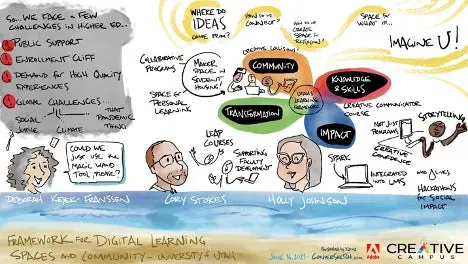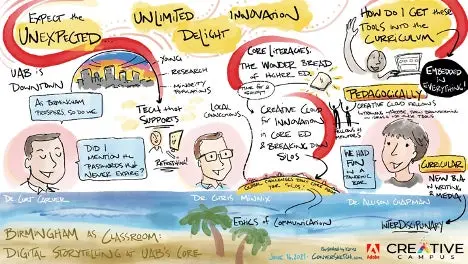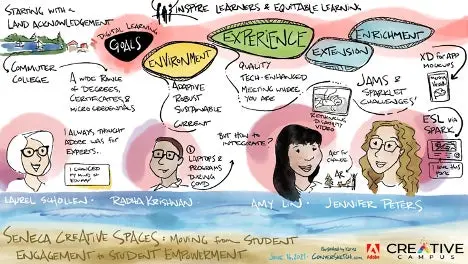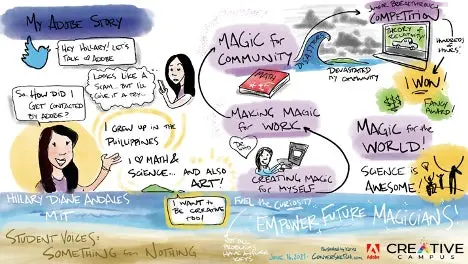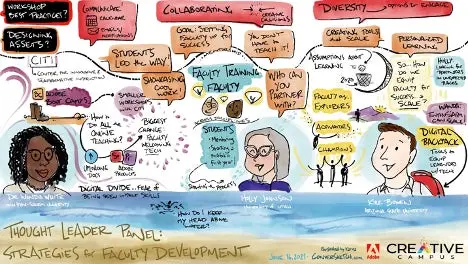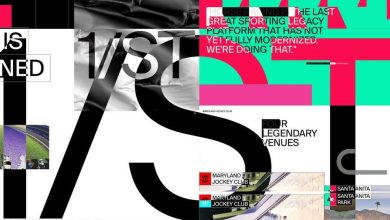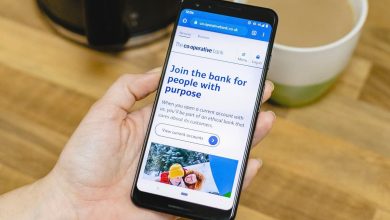An Adobe Creative Campus Collaboration recap
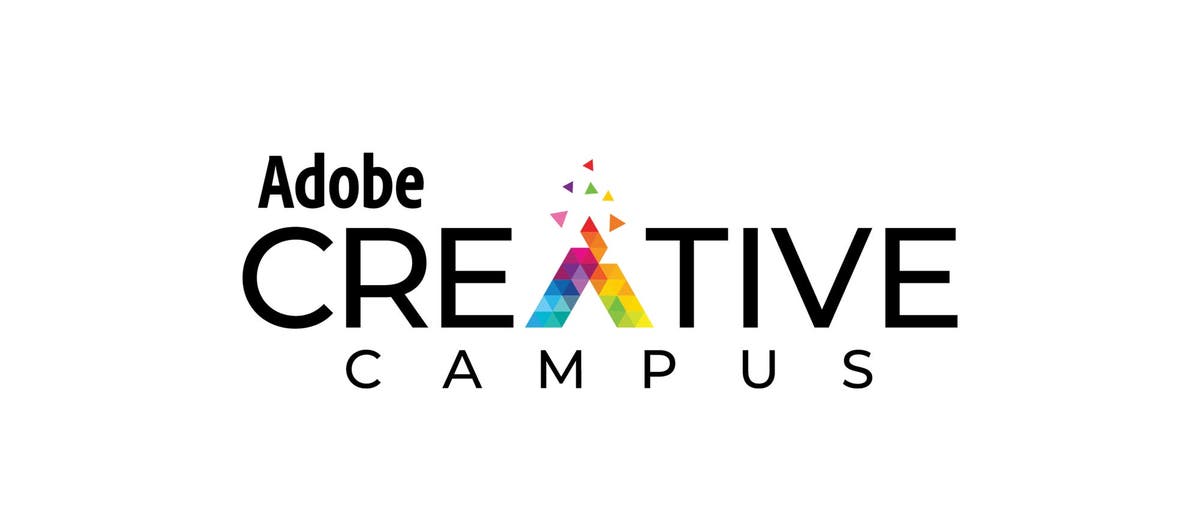
To conclude the current academic year and look forward to the next, Adobe hosted its quarterly Creative Campus Collaboration event, which featured speakers and panelists from across the globe who explored the inspiring ways that their institutions foster digital literacy and creative skills among faculty, staff, and students. Todd Taylor, Adobe pedagogical evangelist and Eliason distinguished professor of English at the University of North Carolina Chapel Hill, hosted the event, which revealed how colleges are:
Creating student learning communities to enhance collaboration and prepare them for high-demand jobs
Offering new training initiatives for faculty and staff to learn the latest digital tools to integrate into curricula and operational workflows
Delivering more enriching learning experiences by fostering digital literacy skills among students to help them achieve milestones in their academic careers
Contents
Digital Learning for students and community at-large
University of Utah faculty members kicked off the Creative Campus Collaboration event with a discussion on how they spearheaded collaborative physical spaces and custom training programs to drive digital learning among students.
Cory Stokes, associate dean of Digital Learning Online & Continuing Education, emphasized the importance of group collaboration, highlighting how the university has created physical spaces like the Adobe Creative Commons space in the new Kahlert Village live-and-learn facilities. Stokes emphasized the importance of spaces that facilitate in-person teamwork, saying “creativity needs a community. It needs to talk.”
Artwork by Karina Branson.
Holly Johnson, associate director of Learning Experience Innovation & Outreach, showcased how the institution’s new Adobe Creative Communicator Course, which was created in partnership with Learn & Work in Utah, gave all state residents the opportunity to learn digital storytelling and pursue personal career goals at no cost.
The new offering from the university enrolled 120 participants, including retired teachers, software developers, students taking gap years, and recent immigrants. Johnson underscored how the course taught participants to apply their digital storytelling skills in their current and future careers, and created a close-knit community during the pandemic. For example, one student, who recently relocated to the United States from Greece, successfully leveraged her video editing skills to secure a job teaching Greek, Ancient Greek, and Latin after completing the program.
Core Literacies: The “Wonder Bread” of higher education
Dr. Chris Minnix, associate professor and director of the Signature Core Curriculum at the University of Alabama at Birmingham (UAB), led a session on the importance of teaching digital literacy skills to amplify students’ understanding of the core curricula. He challenged the idea that courses on writing, communication and quantitative reasoning are antiquated and can’t nurture high-demand skills — on the contrary, they’re pivotal to every student’s academic journey.
Minnix indicated that all too often, core curricula are treated as the “Wonder Bread” of higher education. The courses are ubiquitous and requisite but are seen mainly as a service device for the “meat,” or the substance, that students achieve later in college through advanced courses in their academic discipline. To change this perception, UAB illustrated the importance of core curricula to both faculty and students, proving that these courses can also be interesting and engaging.
Minnix explained how the university integrated core curricula with fields of study like STEM, global and ethical perspectives, and civic engagement. UAB encouraged faculty to incorporate digital tools into the core curricula, enabling students to hone their storytelling skills and more deeply immerse themselves in these core classes.
“Birmingham is a global city that has impacted flows of information and ideas — it’s also a city that sends a lot of amazing ideas and people out into the world,” Minnix said. “[When creating the core curricula], we’re thinking of how we get students to recognize this rich experience and this rich civic context, from the very beginning [of their academic journey].”
Artwork by Karina Branson.
To support faculty with varying levels of familiarity and proficiency with digital tools, UAB created the Creative Cloud Fellows program, which offered customized trainings. Dr. Allison Chapman, professor and English Department Chair, took the training program a step further for her department by identifying a cohort of Creative Cloud Fellows, comprised of those who attended Adobe’s Faculty Development Institute, and could share takeaways as well as train their peers. Faculty then integrated these digital tools into their first-year English courses to promote global learning, which is a process of addressing complex issues that transcend national borders. The resulting work was displayed at the UAB Expo alongside projects completed by senior students that demonstrated how high-quality ideas can be created and shared digitally at all levels of a student’s academic journey.
Creative Spaces: Moving from student engagement to student empowerment
Seneca College, a large urban polytechnical institution, is the first Canadian institution to become an Adobe Creative Campus. Seneca faculty and academic leaders explained how digital tools, like Adobe Creative Cloud, cultivated not only enriched engagement, but, more importantly, student agency and empowerment.
Laurel Schollen, former vice president of Academic, led the effort to make Seneca an Adobe Creative Campus after attending Adobe’s annual EduMAX conference in 2016. A presentation from Dr. Rhonnda Robinson Thomas, Calhoun Lemon professor of Literature at Clemson University, opened her eyes to the accessibility of Adobe tools, and their applications outside of traditional design and art disciplines.
“To me, this was the signal that creating powerful stories of learning journeys, scholarly work and project work through the use of Adobe Creative Cloud was achievable, regardless of credential level or discipline,” she said.
Other campus leaders quickly saw the benefit as well. Adobe tools have since been implemented throughout the institution and are helping to cultivate student agency and empowerment.
“We felt that enabling our students in business, science, health and other faculties will provide them with equal opportunity to learn these tools and prepare them better for their career aspirations,” said Radha Krishnan, chief information officer at Seneca College. “It also aligned with our vision of our digital learning strategy.”
Amy Lin, director of the Teaching & Learning Centre at Seneca College, highlighted the institution’s efforts to enrich faculty and student experiences as well as enhance the quality of student work by providing greater access to digital tools and training opportunities.
The Teaching & Learning Centre offered a series of workshops that varied by skill level and prompted faculty to use one of the three tools: Adobe Spark, Photoshop, and Portfolio. Faculty were challenged to identify ways to use Adobe Creative Cloud tools in their classroom and require students to complete a project or assignment using them, encouraging students to leverage the tools to create expressive work and use storytelling to engage with the course material.
Artwork by Karina Branson.
Seneca also provided best-in-class tools for staff and students beyond the classroom to ensure that all members of the college community had enriching experiences. For example, their adoption of Adobe Sign helped automate 40,000 digital signatures for back-office documents and transcripts, allowing staff to focus on more engaging and meaningful work.
Student Spotlight: Using Creative Cloud to establish a personal and academic brand
Hillary Andales, a rising junior at Massachusetts Institute of Technology (MIT), walked participants through how she used Adobe Creative Cloud to evolve her personal brand as an “aspiring astrophysicist” who is also an accomplished creative. Andales applied her digital literacy skills when entering an international science competition, using Premiere Pro and After Effects to create a video explaining the concept of time relativity. She described the extensive creation process that consisted of analyzing existing video models, researching the scientific theory, as well as script-writing to engage and educate both viewers and the judging panel. In honing her storytelling efforts, she ultimately earned the top prize and funded her college education.
Artwork by Karina Branson.
“Because I had the tools, because I had the resources, I became empowered — not just to make art — but also to fill in bigger and bigger problems that were relevant to me and to the people in my community,” Andales said. “As educators, I feel that we need to empower future magicians by giving the students the tools, the attitude, the mindset, the environment and the training to take the status quo what it is right now and transform it into something better.”
She continues to refine her personal and academic brand while at MIT through “day in the life” vlogs on YouTube and digital class projects.
Using student-made assets to improve Digital Literacy Training for faculty
In closing the event, Todd Taylor moderated a panel of academic leaders who shared their unique strategies for enhancing faculty development in a post-pandemic world. Dr. Wanda White, director for the Center for Innovative and Transformative Instruction at Winston Salem State University, provided an example of how student-made assets inspired faculty to use these tools for course assignments.
“When we collaborated with Student Engagement and [faculty] started seeing football games being advertised through a Spark page or Premiere video, that’s when they started saying ‘oh, I can use this in my English class for a presentation,’” White said.
Artwork by Karina Branson.
Kyle Bowen, executive director of Learning Experience in the Office of the CIO at Arizona State University, underscored the impact of faculty who can champion digital learning and inspire their peers to leverage digital tools in their teaching practice.
“These types of learning experiences aren’t just for the people who participate in them, but they have this ripple effect as they model changes for others in their departments, in other disciplines and others who might want to implement similar types of activities in their own courses,” Bowen said.
Panelists unanimously agreed that by sharing student outputs and collaborating with fellow faculty, educators are more apt to pursue their own digital learning, regardless of their level.
For more information on how to integrate digital skills across disciplines and throughout curricula, please visit the Digital Literacy resources page. If you’re interested in learning how your college or university can become an Adobe Creative Campus to drive greater academic and professional success, please contact your sales representative.
Source : Adobe

